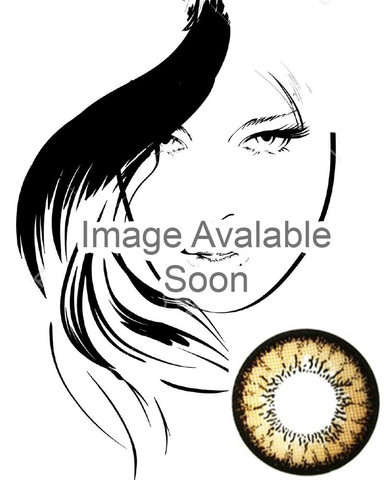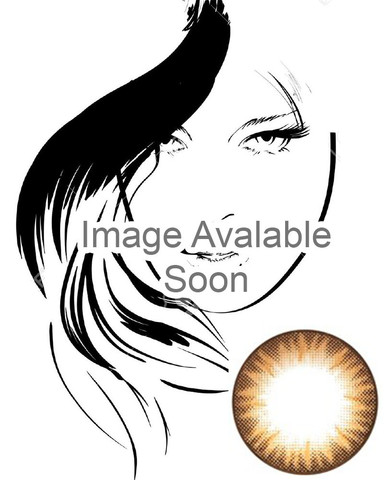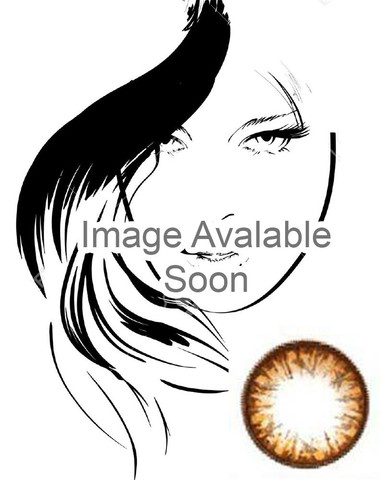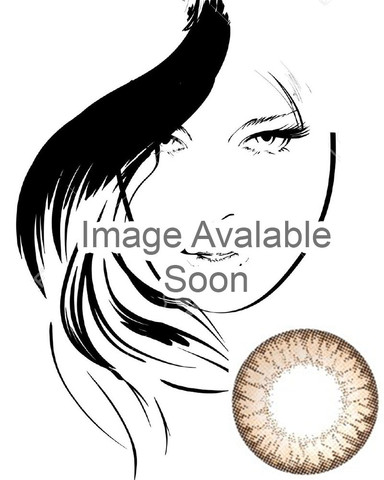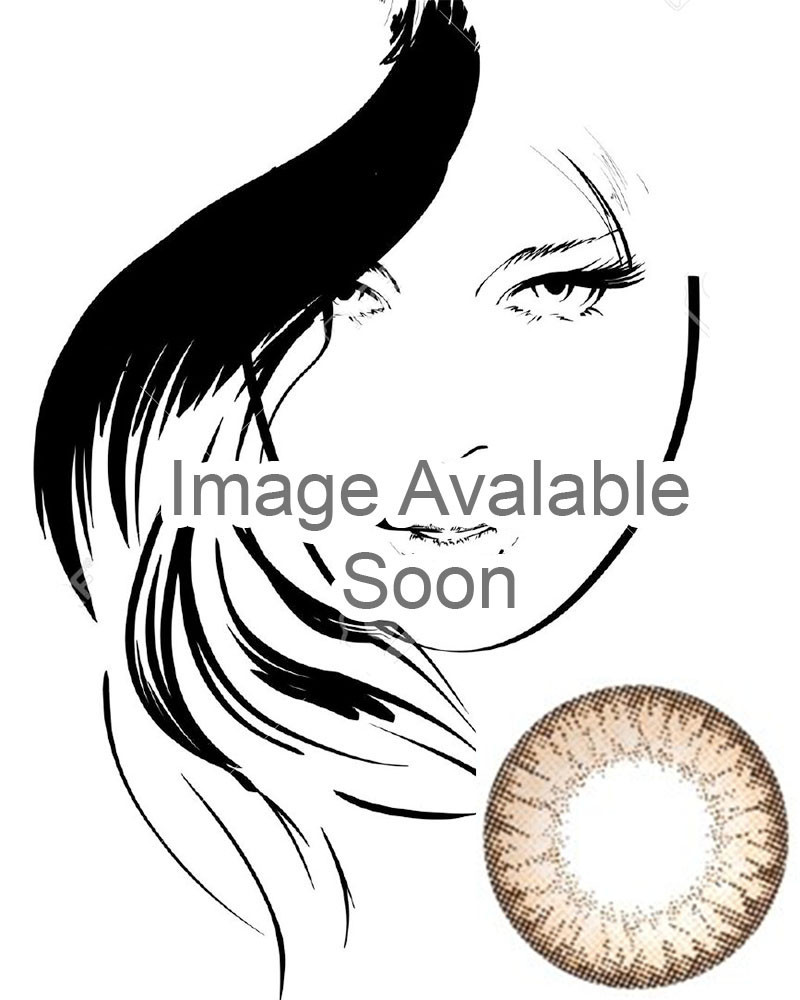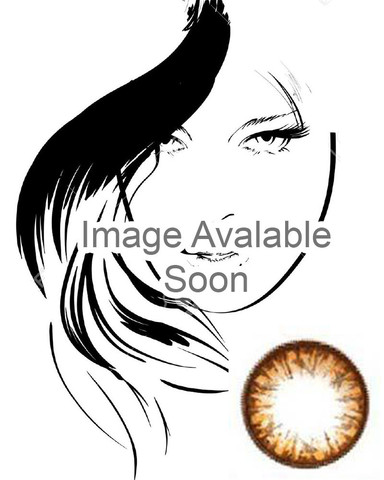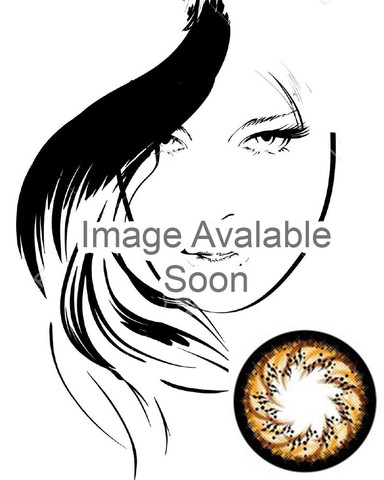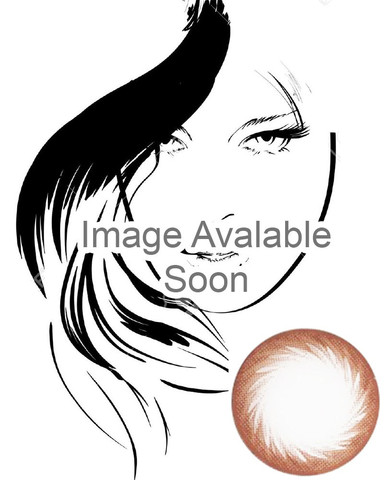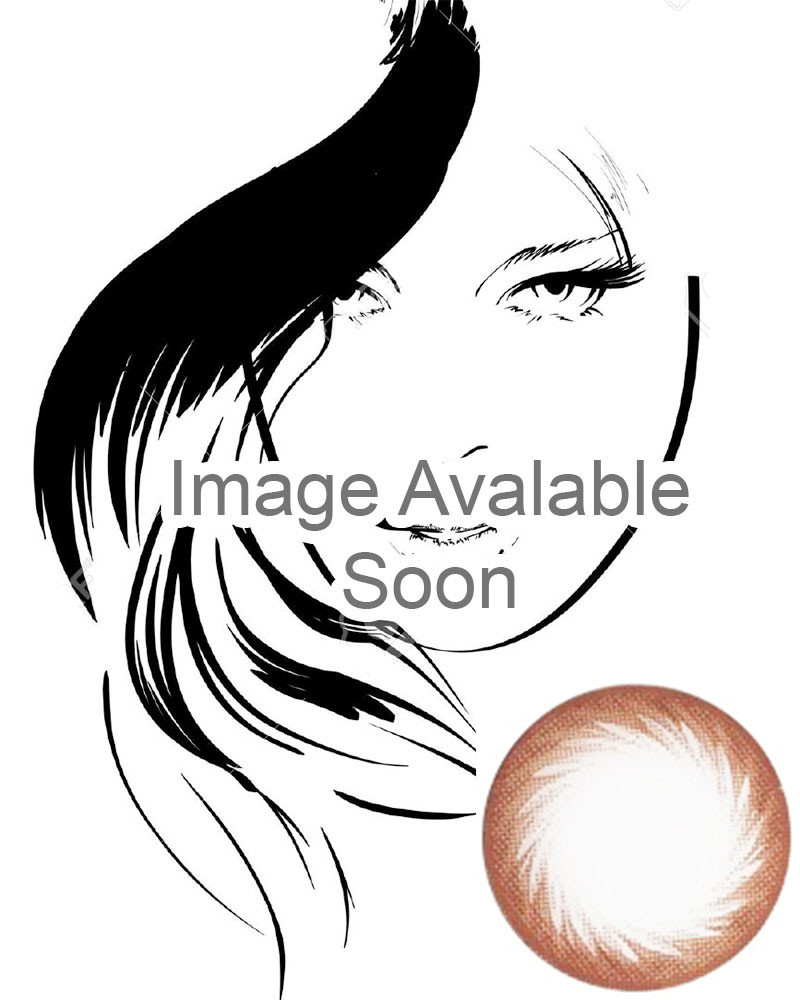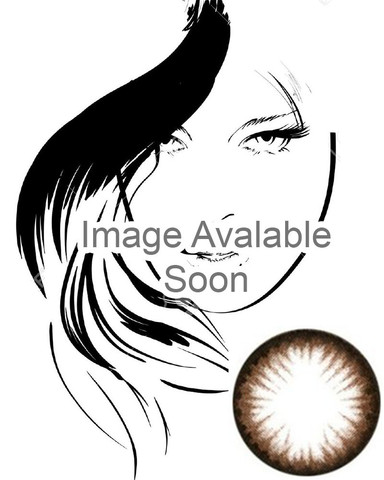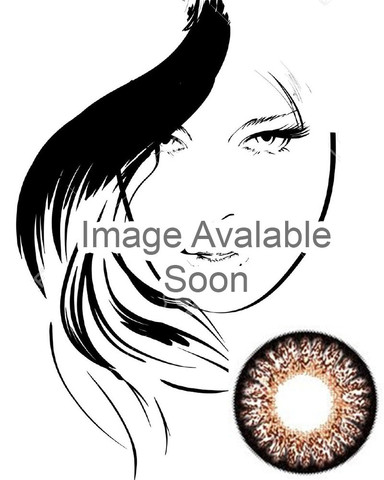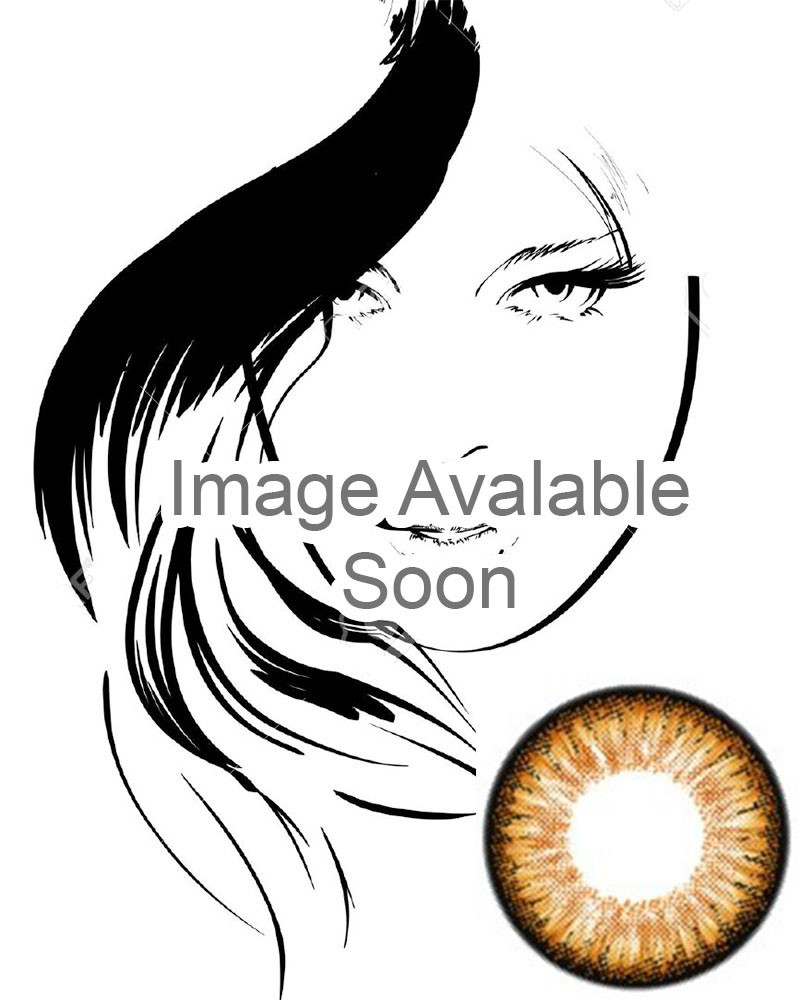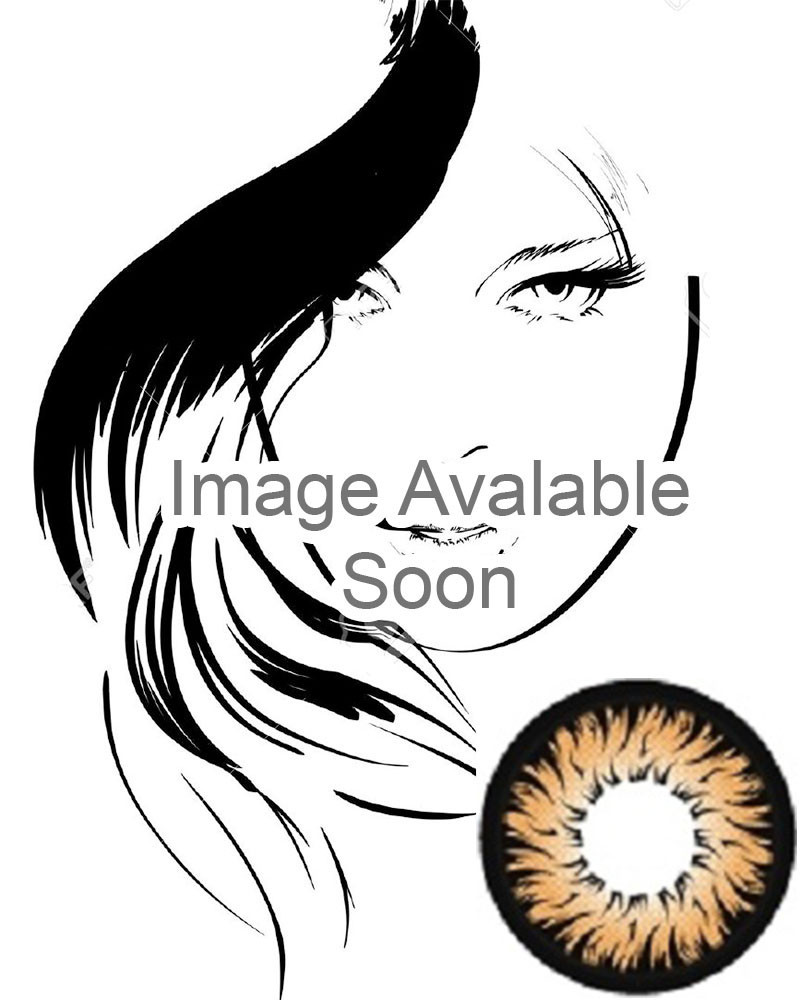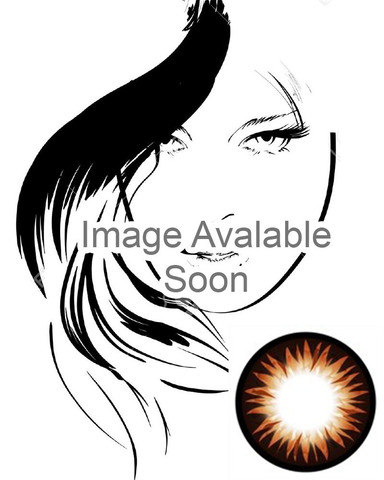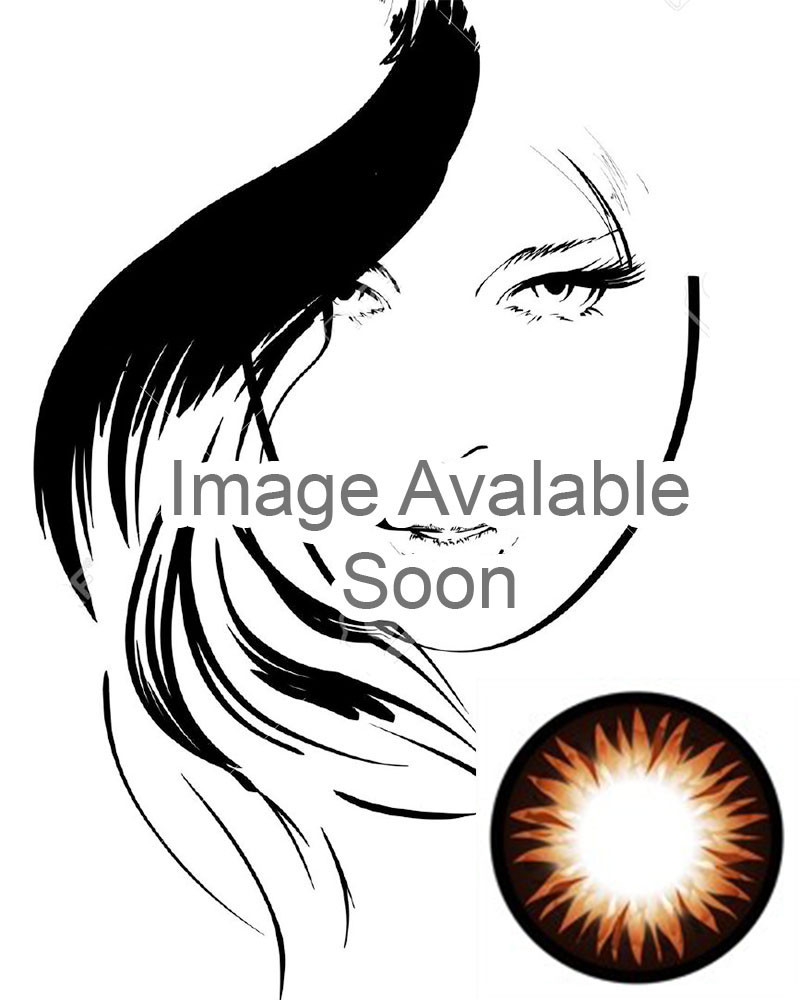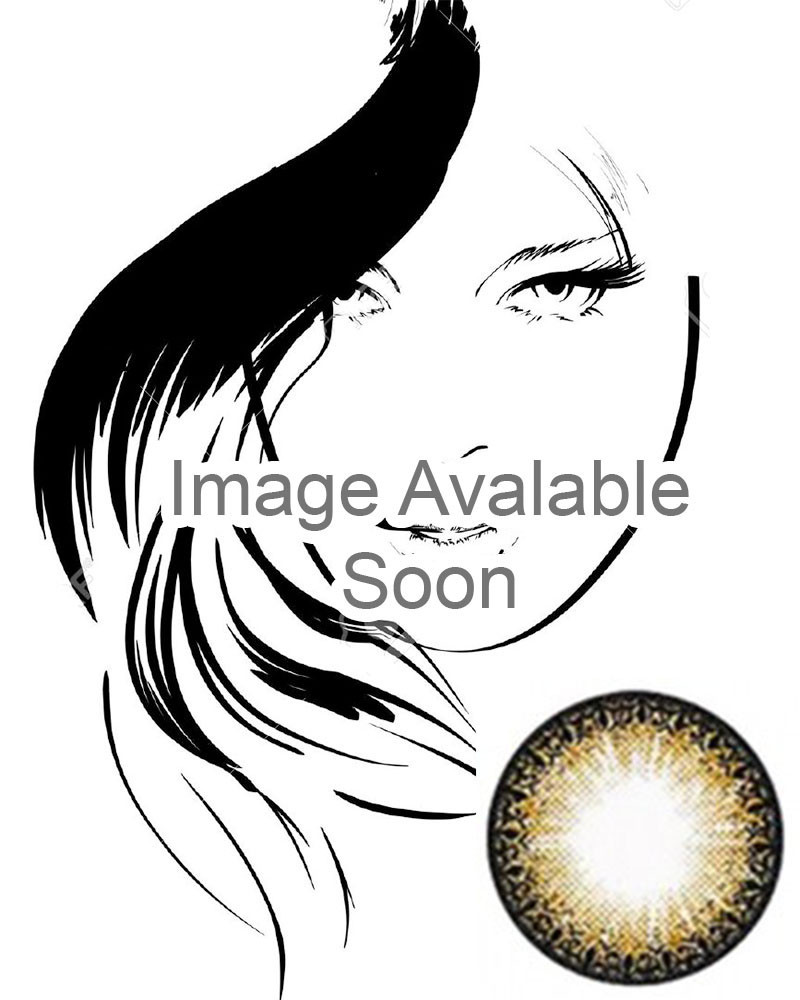Brown/Hazel colored contact lenses are so easy to work with. Anyone with any eye color can make the most of what a brown lens has to offer. Brown eyed beauties can make their eyes appear larger and brighter by selecting a large diameter lens with amber tones. Blue, green, and hazel eyes will transform into mesmerizing amber gems that glisten in the light.
Brown/Hazel Colored Contact Lenses
Geo Angel Brown 2 Tone Circle Lens CM834
$16.95
| Brand: | GEO |
| Manufacture: | GEO Medical Inc. |
| Origin: | South Korea |
| Model: | CM-834 |
| Diameter: | 14.2 mm |
| Base Curve: | 8.6 mm |
| Water Content: | 40% |
| Life Span: | 1 Year |
| Packaging | A Pair (2) of Circle Lenses |
GEO Bella Special Brown 2 Tone Circle Lens BS204
$16.95
| Brand: | GEO |
| Manufacture: | GEO Medical Inc. |
| Origin: | South Korea |
| Model: | BS-204 |
| Diameter: | 14.2 mm |
| Base Curve: | 8.6 mm |
| Water Content: | 40% |
| Life Span: | 1 Year |
| Packaging | A Pair (2) of Circle Lenses |
GEO Big Grang Grang Brown Circle Lens WHC244
$16.95
| Brand: | GEO |
| Manufacture: | GEO Medical Inc. |
| Origin: | South Korea |
| Model: | WHC-244 |
| Diameter: | 14.8 mm |
| Base Curve: | 8.8 mm |
| Water Content: | 40% |
| Life Span: | 1 Year |
| Packaging | A Pair (2) of Circle Lenses |
GEO Brown Circle Lens JBN103
$16.95
| Brand: | GEO |
| Manufacture: | GEO Medical Inc. |
| Origin: | South Korea |
| Model: | JBN-103 |
| Diameter: | 14.2 mm |
| Base Curve: | 8.6 mm |
| Water Content: | 40% |
| Life Span: | 1 Year |
| Packaging | A Pair (2) of Circle Lenses |
Geo Fresh Brown Circle Lens FC724
$16.95
| Brand: | GEO |
| Manufacture: | GEO Medical Inc. |
| Origin: | South Korea |
| Model: | FC-724 |
| Diameter: | 14.2 mm |
| Base Curve: | 8.6 mm |
| Water Content: | 40% |
| Life Span: | 1 Year |
| Packaging | A Pair (2) of Circle Lenses |
Geo Grang Grang Brown Circle Lens HC244
$16.95
| Brand: | GEO |
| Manufacture: | GEO Medical Inc. |
| Origin: | South Korea |
| Model: | HC-244 |
| Diameter: | 14.2 mm |
| Base Curve: | 8.6 mm |
| Water Content: | 40% |
| Life Span: | 1 Year |
| Packaging | A Pair (2) of Circle Lenses |
Geo Honey Wing Brown Circle Lens OL104
$16.95
| Brand: | GEO |
| Manufacture: | GEO Medical Inc. |
| Origin: | South Korea |
| Model: | OL-104 |
| Diameter: | 14.2 mm |
| Base Curve: | 8.6 mm |
| Water Content: | 40% |
| Life Span: | 1 Year |
| Packaging | A Pair (2) of Circle Lenses |
GEO Magic Brown Circle Lens BC102
$16.95
| Brand: | GEO |
| Manufacture: | GEO Medical Inc. |
| Origin: | South Korea |
| Model: | BC-102 |
| Diameter: | 14.2 mm |
| Base Curve: | 8.6 mm |
| Water Content: | 40% |
| Life Span: | 1 Year |
| Packaging | A Pair (2) of Circle Lenses |
GEO Magic Brown Circle Lens BC103
$16.95
| Brand: | GEO |
| Manufacture: | GEO Medical Inc. |
| Origin: | South Korea |
| Model: | BC-103 |
| Diameter: | 14.2 mm |
| Base Curve: | 8.6 mm |
| Water Content: | 40% |
| Life Span: | 1 Year |
| Packaging | A Pair (2) of Circle Lenses |
GEO Mimi Cafe Cappuccino Brown WMM600
$16.95
| Brand: | GEO |
| Manufacture: | GEO Medical Inc. |
| Origin: | South Korea |
| Model: | WMM-600 |
| Diameter: | 15.0 mm |
| Base Curve: | 8.8 mm |
| Water Content: | 42% |
| Life Span: | 1 Year |
| Packaging | A Pair (2) of Circle Lenses |
GEO Mimi Cafe Latte Brown WMM506
$16.95
| Brand: | GEO |
| Manufacture: | GEO Medical Inc. |
| Origin: | South Korea |
| Model: | WMM-506 |
| Diameter: | 15.0 mm |
| Base Curve: | 8.8 mm |
| Water Content: | 42% |
| Life Span: | 1 Year |
| Packaging | A Pair (2) of Circle Lenses |
GEO Mimi Cafe Macchiato Brown WMM504
$16.95
| Brand: | GEO |
| Manufacture: | GEO Medical Inc. |
| Origin: | South Korea |
| Model: | WMM-504 |
| Diameter: | 15.0 mm |
| Base Curve: | 8.8 mm |
| Water Content: | 42% |
| Life Span: | 1 Year |
| Packaging | A Pair (2) of Circle Lenses |
GEO Natural Brown Circle Lens BC101
$16.95
| Brand: | GEO |
| Manufacture: | GEO Medical Inc. |
| Origin: | South Korea |
| Model: | BC-101 |
| Diameter: | 14.2 mm |
| Base Curve: | 8.6 mm |
| Water Content: | 40% |
| Life Span: | 1 Year |
| Packaging | A Pair (2) of Circle Lenses |
GEO Princess Mimi Almond Brown XMM204
$16.95
These lenses may look simple, but you’ll be surprised what they can do for your eyes. If your eyes are naturally dark, the GEO Princess Mimi Almond Brown lens can open them up, making them appear larger while adding new dimensions. The softer brown tones designed to blend into your eye can soften your appearance, making you look light and dreamy. The lighter tones will emphasize amber shades that naturally appear in your eyes, giving them a radiant, golden warmth. If you’re looking for a subtle way to transform your gaze, you’ll love the gentle doe-eyed effect that these circle lenses will give you.
Lenses Info:
| Brand: | GEO |
| Manufacture: | GEO Medical Inc. |
| Origin: | South Korea |
| Model: | XMM-204 |
| Diameter: | 15.0 mm |
| Base Curve: | 8.7 mm |
| Water Content: | 42% |
| Life Span: | 1 Year |
| Packaging | A Pair (2) of Circle Lenses |
GEO Princess Mimi Chocolate Brown WMM304
$16.95
People with eyes that are any shade of brown, amber, or green will love what the GEO Princess Mimi Chocolate Brown can do for their eyes. While some circle lenses focus straight color with a few tones toward the center, this lens offers a fuller coverage with a wider array of complex colors. The end result is something that looks hyper-realistic. The complex arrangement of colored flecks help this lens blend into your eye, giving you a living doll appearance. The blended limbal ring amps up the dramatic appearance of these lenses by adding a stark black contrast, making you look beautiful and otherworldly.
Lenses info:
| Brand: | GEO |
| Manufacture: | GEO Medical Inc. |
| Origin: | South Korea |
| Model: | WMM-304 |
| Diameter: | 15.0 mm |
| Base Curve: | 8.8 mm |
| Water Content: | 42% |
| Life Span: | 1 Year |
| Packaging | A Pair (2) of Circle Lenses |
GEO Princess Mimi Starmish Brown XKP304
$16.95
While there are plenty of brown and amber circle lenses, how often do you see a true gold? That’s exactly what you’re getting with the GEO Princess Mimi Starmish Brown lens. Rather than being a standard shade, these lenses are a bright and shimmering amber. If you want something more alluring and mysterious than a traditional brown lens, you’ll be absolutely captivated by the unique hue of these lenses, which almost appear to glitter in the light. The best part of this lens is the versatility it offers. This gold will blend with any eye color for an instant brightening effect.
Lenses info:
| Brand: | GEO |
| Manufacture: | GEO Medical Inc. |
| Origin: | South Korea |
| Model: | XKP-304 |
| Diameter: | 15.0 mm |
| Base Curve: | 8.7 mm |
| Water Content: | 42% |
| Life Span: | 1 Year |
| Packaging | A Pair (2) of Circle Lenses |
Geo Super Angel Brown Circle Lens XCM214
$16.95
| Brand: | GEO |
| Manufacture: | GEO Medical Inc. |
| Origin: | South Korea |
| Model: | XCM-214 |
| Diameter: | 14.5 mm |
| Base Curve: | 8.7 mm |
| Water Content: | 40% |
| Life Span: | 1 Year |
| Packaging | A Pair (2) of Circle Lenses |
Geo Xtra Aster Brown 2 Tone Circle Lens WTC14
$16.95
| Brand: | GEO |
| Manufacture: | GEO Medical Inc. |
| Origin: | South Korea |
| Model: | WT-C14 |
| Diameter: | 15.0 mm |
| Base Curve: | 8.7 mm |
| Water Content: | 40% |
| Life Span: | 1 Year |
| Packaging | A Pair (2) of Circle Lenses |
Geo Xtra Bella Brown 2 Tone Circle Lens WBS204
$16.95
| Brand: | GEO |
| Manufacture: | GEO Medical Inc. |
| Origin: | South Korea |
| Model: | WBS-204 |
| Diameter: | 15.0 mm |
| Base Curve: | 8.7 mm |
| Water Content: | 40% |
| Life Span: | 1 Year |
| Packaging | A Pair (2) of Circle Lenses |
Geo Xtra Brown 2 Tone Circle Lens WTA44
$16.95
| Brand: | GEO |
| Manufacture: | GEO Medical Inc. |
| Origin: | South Korea |
| Model: | WT-A44 |
| Diameter: | 15.0 mm |
| Base Curve: | 8.7 mm |
| Water Content: | 40% |
| Life Span: | 1 Year |
| Packaging | A Pair (2) of Circle Lenses |

